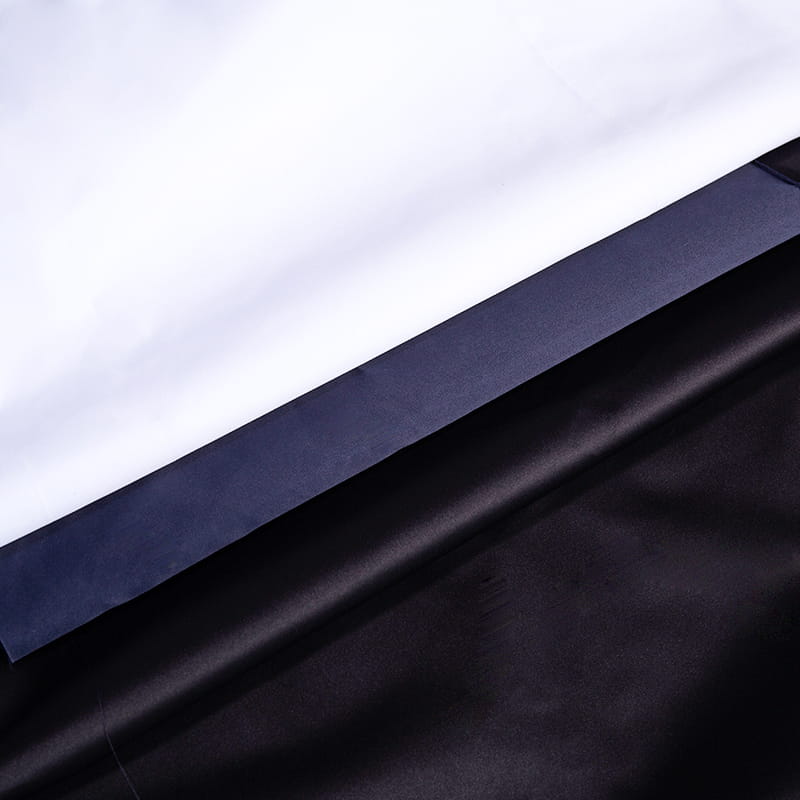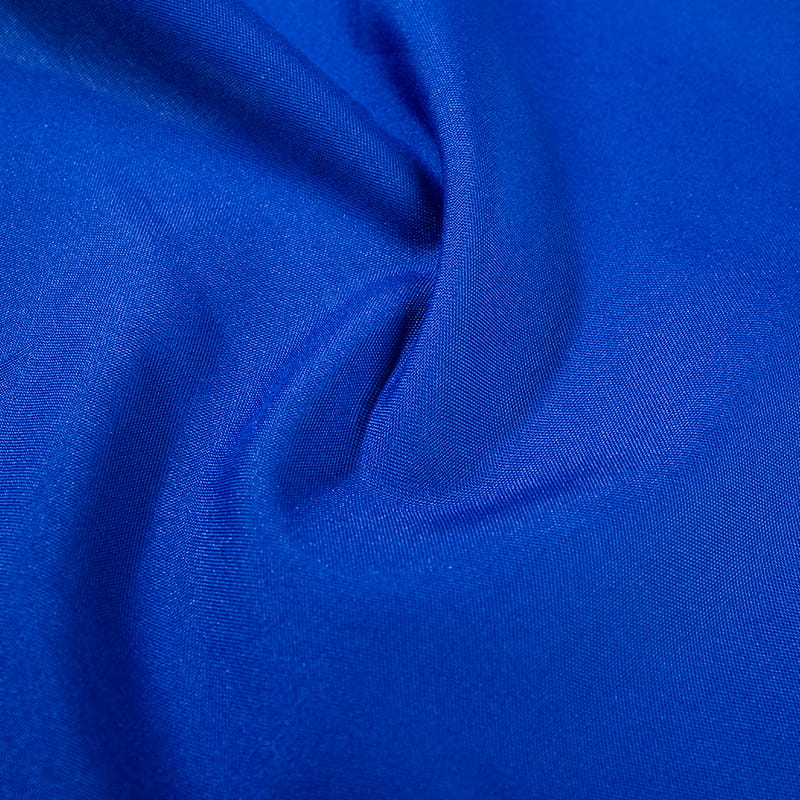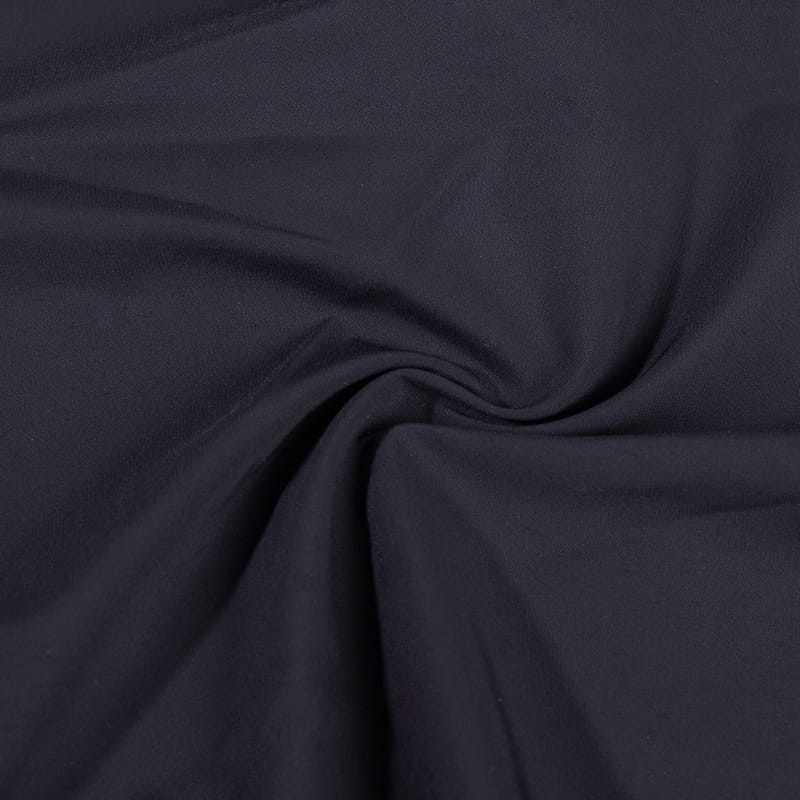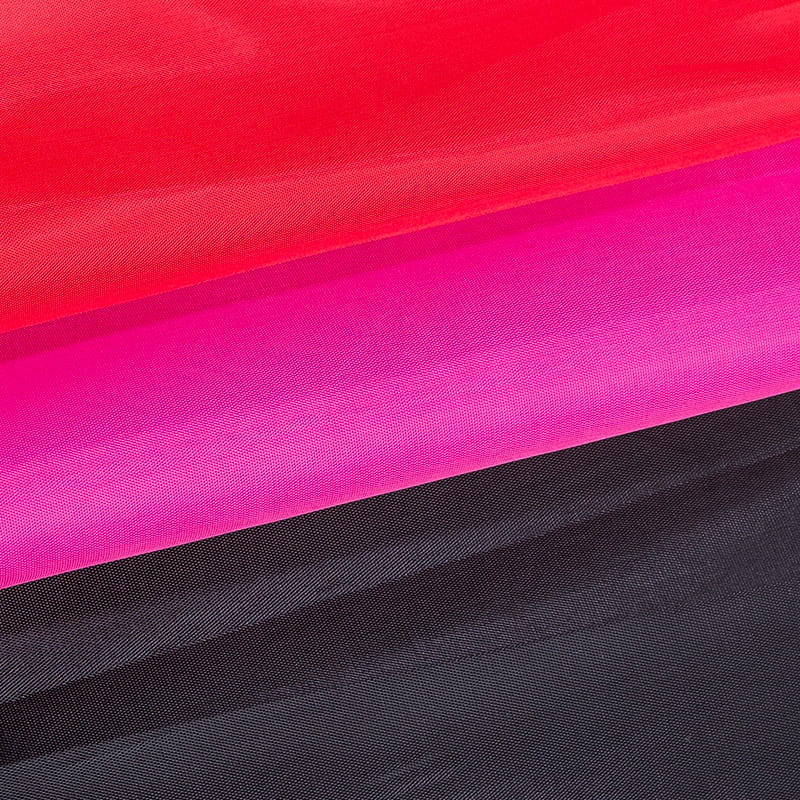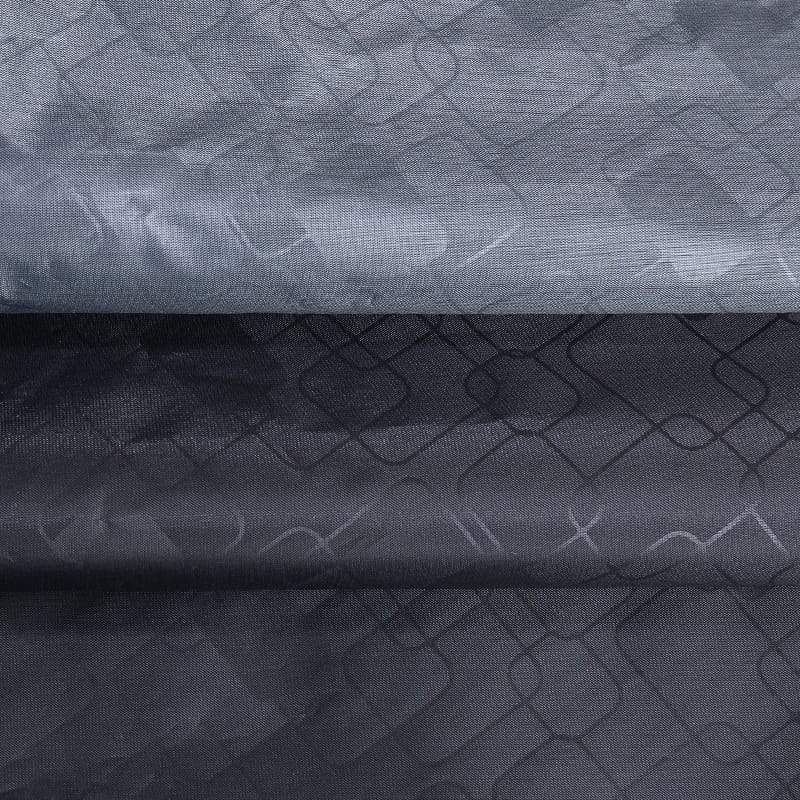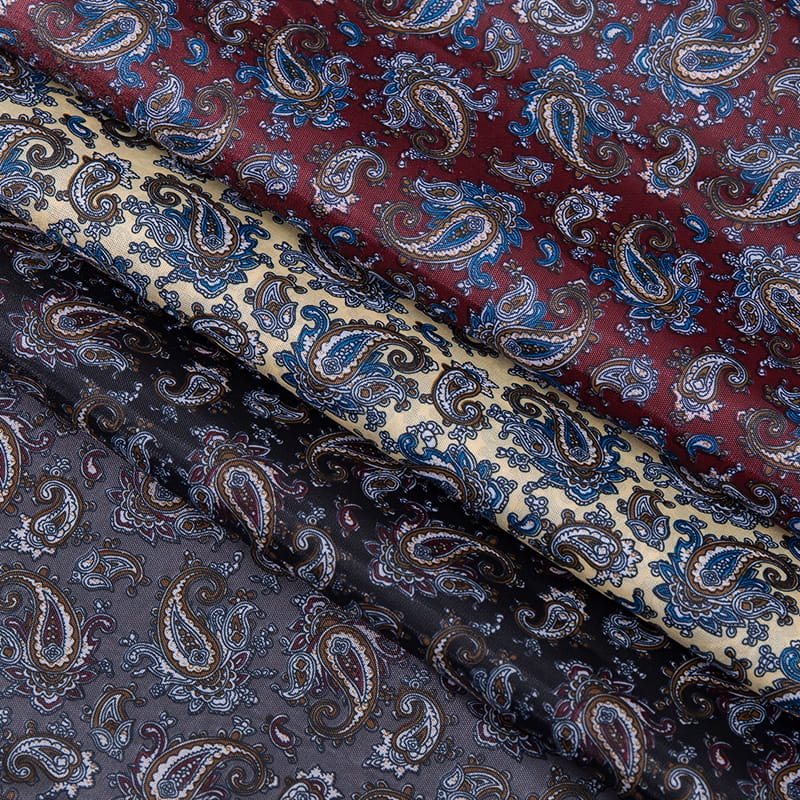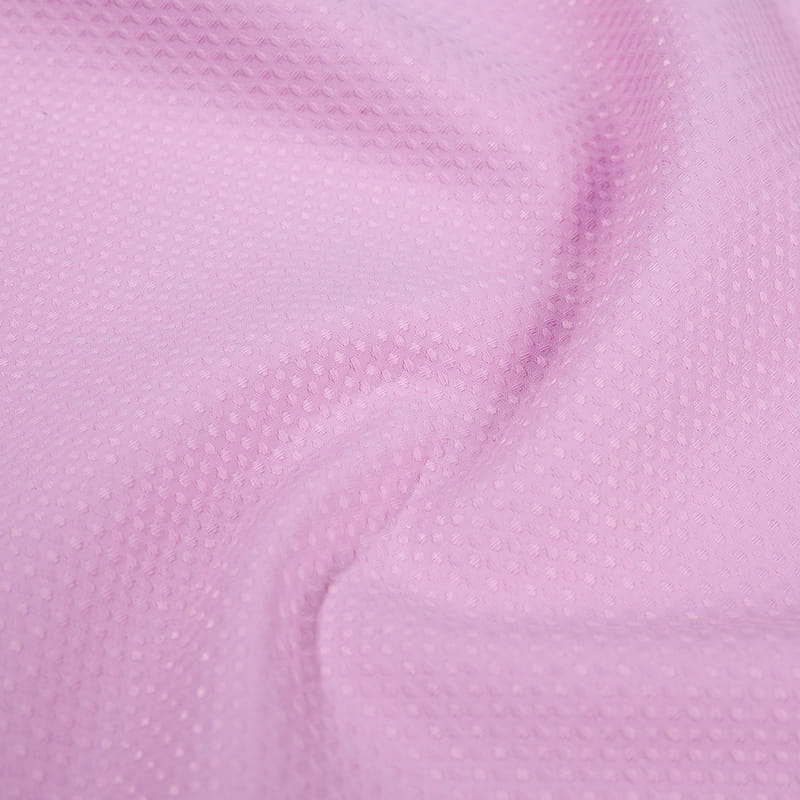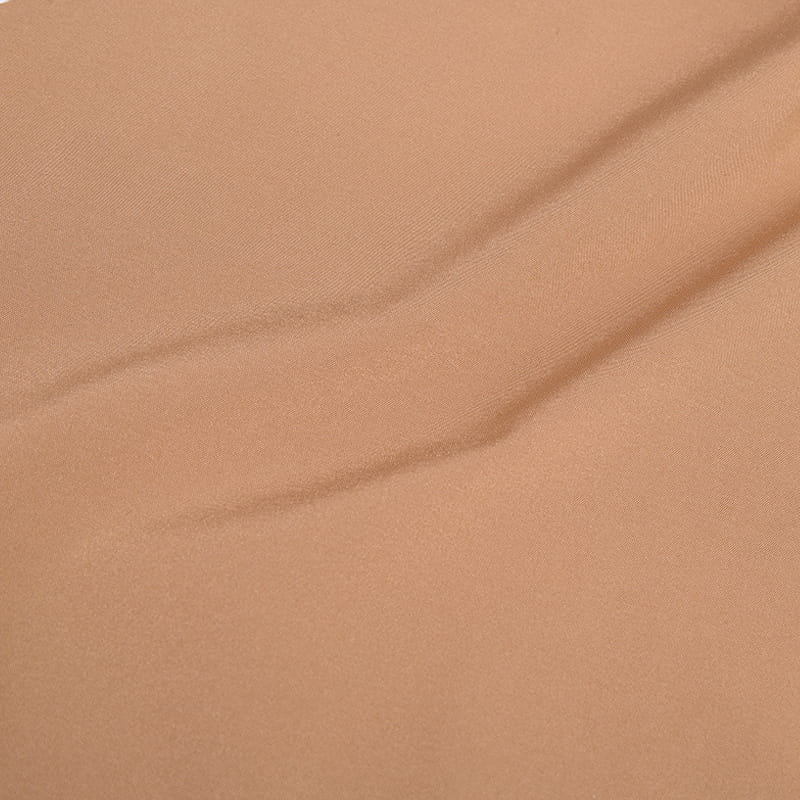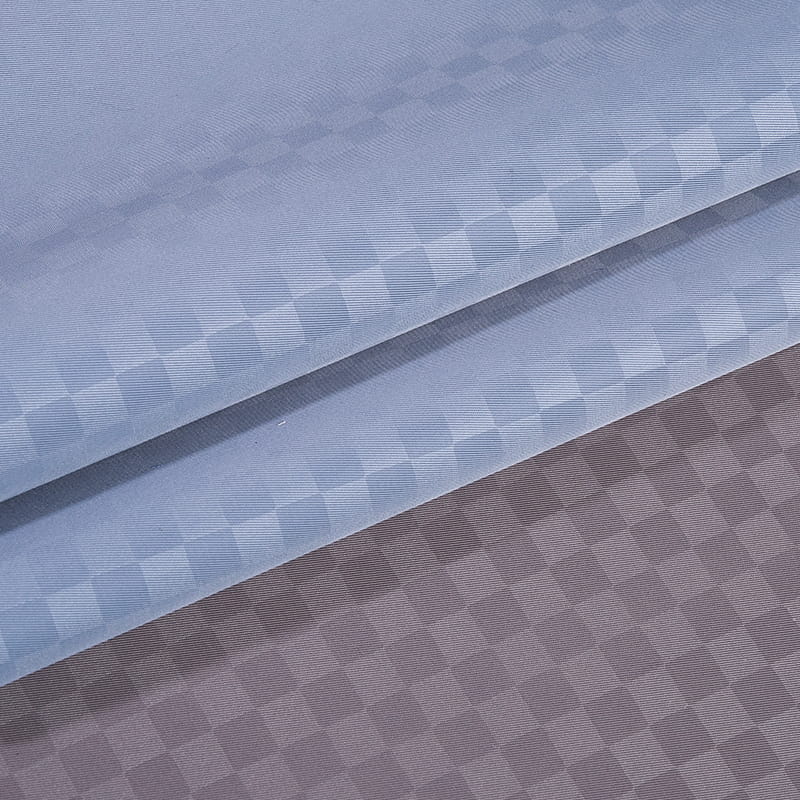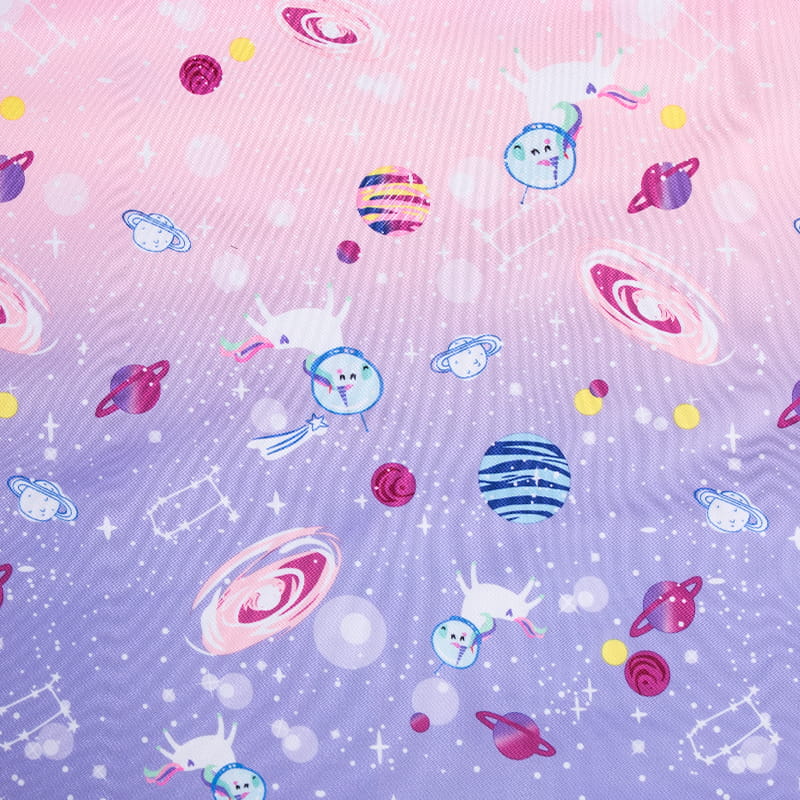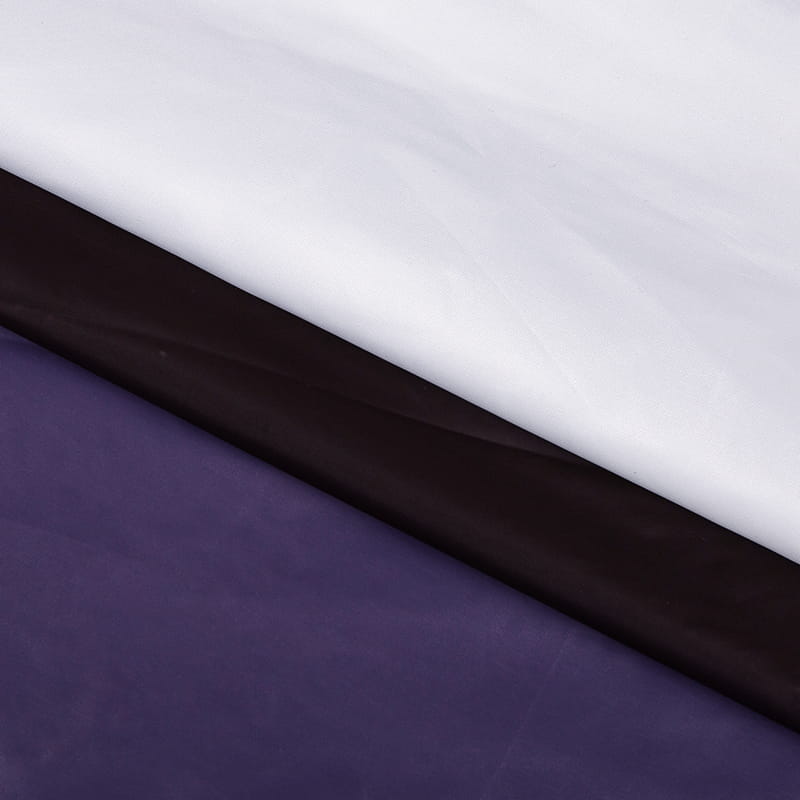Dobby Polyester Fabric's antibacterial and anti-mites treatment and color fastness enhancement in the home textile field
2025-06-26
With the trend of pursuing health and high quality in the home textile industry, Dobby Polyester Fabric has become a popular choice in the fields of bedding, curtains, sofa fabrics, etc. with its unique texture design and versatility. However, with consumers' increased health requirements for home environment and their emphasis on color durability, Dobby Polyester Fabric's demand for upgrading its antibacterial and mite-proof performance and color fastness is becoming increasingly urgent. In recent years, the industry has made significant progress in these two core areas through technological innovation and process optimization, providing strong support for the improvement of home textile products.
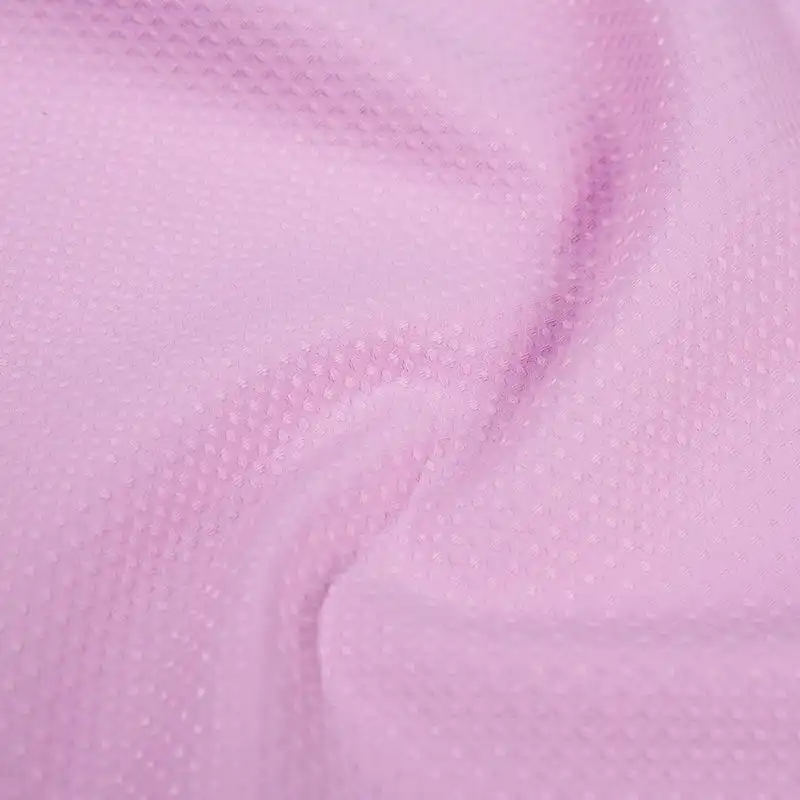
Features and Home Textile Application Challenges of Dobby Polyester Fabric
Dobby Polyester Fabric forms rich three-dimensional textures through jacquard weaving process, which are both aesthetic and functional, and is widely used in home textile products. Its polyester fiber material has the advantages of wear resistance and easy care, but its natural antimicrobial properties are weak and it is easy to breed bacteria and mites in humid environments, affecting home health. At the same time, the color fastness of traditional dyeing processes on polyester fabrics is uneven, and fading and discoloration are prone to occur after long-term use or washing, resulting in damage to the appearance of home textile products and shortening the service life. These problems have restricted Dobby Polyester Fabric's further expansion in the high-end home textile market and prompted the industry to increase its technological research and development efforts.
Innovation and application of antibacterial and mite treatment technology
In response to the health needs of home textile scenes, Dobby Polyester Fabric's antibacterial and anti-mites treatment technology is showing a diversified development trend. Chemical finishing technology is one of the mainstream solutions at present, and it achieves a lasting antibacterial effect by evenly applying antibacterial agent to the surface of the fabric or the inside of the fiber. For example, silver ion antibacterial agents can effectively inhibit common bacteria such as E. coli and Staphylococcus aureus with their broad-spectrum antibacterial properties, and at the same time have a repelling effect on mites. Silver ions are combined with polyester fibers through chemical bonds, which are not easily lost due to washing, ensuring long-term antibacterial performance.
The application of natural antibacterial materials has also gradually emerged, such as chitosan, tea polyphenols, etc. Chitosan is derived from crustacean shells, has good biocompatibility and antibacterial activity, and can be adhered to the Dobby Polyester Fabric surface by a padding or coating process. Tea polyphenols are extracted from tea. They not only have antibacterial and anti-mites, but also have antioxidant properties, which can protect fabric fibers from oxidative damage. This type of natural antibacterial agent is environmentally friendly and non-toxic, and is in line with the development trend of green and healthy home textile products. It is especially suitable for infants and young children's home textiles, personal bedding and other scenarios.
In terms of process innovation, nanotechnology has brought breakthroughs in antibacterial and anti-mites treatment. By making antibacterial agents into nano-scale particles, the high specific surface area and strong adsorption ability can make the antibacterial components more evenly distributed in the fiber surface and internal pores. Nano-anti-bacterial treatment not only improves the fastness of the antibacterial agent, but also avoids the hardening of the fabric's feel that traditional processes may cause, ensuring the soft touch and comfortable experience of Dobby Polyester Fabric.
Technical path to improve color fastness
Color fastness is an important indicator for measuring the quality of home textile products, and directly affects the aesthetics and durability of the product. In order to improve the color fastness of Dobby Polyester Fabric, the industry optimizes the entire process from dye selection, dyeing process and post-organization. In terms of dyes, dispersed dyes have become the first choice for dyeing polyester fabrics due to their good compatibility with polyester fibers and high color fastness. Through the optimization of molecular structure, the new environmentally friendly dispersed dye further improves its water-resistant, friction-resistant and light-resistant color fastness, while reducing the content of heavy metals and harmful chemicals, and complies with international environmental protection standards.
Improved dyeing process is the key to improving color fastness. The high-temperature and high-pressure dyeing process allows dye molecules to fully penetrate the polyester fibers by applying a high-temperature and high-pressure environment in the airtight container to form a firm bond. This process significantly improves the dyeing rate and color fastness of dyes, especially suitable for dark color Dobby Polyester Fabric. For the special texture of jacquard fabric, precise control of the temperature, time and pressure parameters during the dyeing process can ensure that the color of the flower pattern area and the base color area is uniform and avoiding the problem of color flowers and color difference.
The color fixing treatment in the post-organization process further consolidates the dyeing effect. By using a color fixing agent, a protective film is formed on the surface of the fiber to block the active groups of the dye molecules and reduce their loss under external factors (such as water, friction, and light). Silicone-type color fixing agents can not only improve color fastness, but also give the fabric a soft and smooth feel, achieving a double improvement in function and texture. In addition, the application of ultraviolet protection and antioxidants can effectively inhibit the damage of ultraviolet rays and oxygen to dye molecules, and extend the color durability of home textile products.
Technology Synergy and Future Trends
Antibacterial and mite treatment and color fastness enhancement have synergies in Dobby Polyester Fabric’s home textile applications. On the one hand, antibacterial and anti-mites usually need to be performed after dyeing. Reasonable selection of treatment processes and chemicals can avoid negative effects on color fastness; on the other hand, high color fastness fabrics can still maintain effective adhesion of antibacterial agents after multiple washes, ensuring the sustainability of healthy functions. For example, using the process route of dyeing first and then nano-anti-bacterial finishing, by optimizing the matching of process sequence with parameters, excellent antibacterial performance and color stability can be achieved simultaneously.
Looking ahead, as consumers' pursuit of healthy homes and quality life continues to upgrade, Dobby Polyester Fabric's technological innovation in the home textile field will continue to deepen. Antibacterial and mite-proof technology will develop towards high efficiency, long-term and multi-functional directions, such as integrating multiple functions such as antibacterial, anti-viral, and anti-odor prevention; color fastness improvement technology will be combined with new processes such as digital printing and intelligent dyeing to achieve richer color performance and more accurate color fastness control. At the same time, the concept of green environmental protection will run through the technological research and development, and promote Dobby Polyester Fabric to develop towards a sustainable and low-energy consumption, low-pollution, and recyclable direction, providing new impetus for the high-quality development of the home textile industry.

 English
English русский
русский عربى
عربى